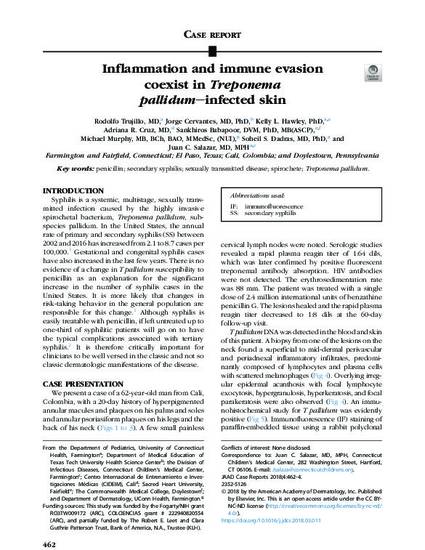
Syphilis is a systemic, multistage, sexually transmitted infection caused by the highly invasive spirochetal bacterium, Treponema pallidum, subspecies pallidum. In the United States, the annual rate of primary and secondary syphilis (SS) between 2002 and 2016 has increased from 2.1 to 8.7 cases per 100,000.1 Gestational and congenital syphilis cases have also increased in the last few years. There is no evidence of a change in T pallidum susceptibility to penicillin as an explanation for the significant increase in the number of syphilis cases in the United States. It is more likely that changes in risk-taking behavior in the general population are responsible for this change. Although syphilis is easily treatable with penicillin, if left untreated up to one-third of syphilitic patients will go on to have the typical complications associated with tertiary syphilis. It is therefore critically important for clinicians to be well versed in the classic and not so classic dermatologic manifestations of the disease.

Open access funded by National Institutes of Health.